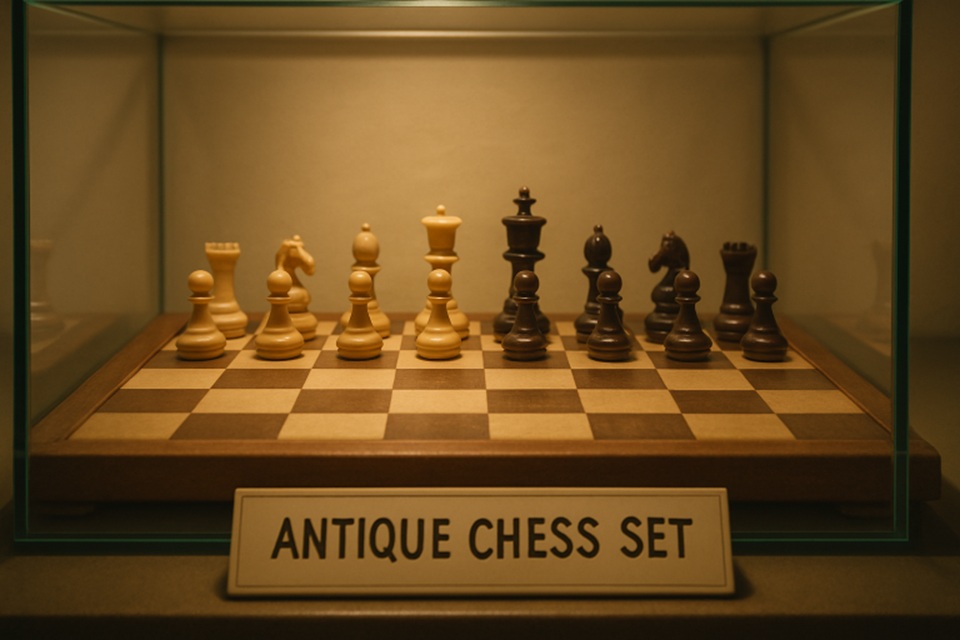Key Takeaways:
- Antique chess sets are valuable cultural artifacts that require mindful preservation and ethical stewardship.
- Proper care ensures long—term protection, including controlled storage conditions, gentle cleaning, and limited handling.
- Understanding materials like wood, ivory, and metal is essential for applying the correct maintenance techniques.
- Responsible collecting also involves verifying provenance and compliance with material regulations.
Table of Contents
Introduction
Antique chess sets are cherished not only as playable treasures but as genuine reflections of previous eras’ artistic and cultural expressions. Each piece and board represents craftsmanship, history, and personal stories waiting to be discovered. Ensuring their longevity requires special care and an informed approach to storage and display, allowing enthusiasts and collectors to become stewards of a rich heritage. Collectors searching for exceptional historical chess sets are often motivated by a love of the game and a desire to preserve these irreplaceable artifacts.
With proper attention, antique chess sets can remain centerpiece attractions in a home or collection, respected for their uniqueness and protected from environmental threats and wear over time. This means going beyond aesthetics and understanding the best practices for handling, cleaning, and exhibiting such valuable items.
Preservation is not just a practical consideration—it’s also an ethical one, especially when handling sets made of rare or controlled materials like ivory or exotic wood. With increasing regulatory focus and public interest in the ethics of collecting, being informed is essential for responsible stewardship.
Understanding The Materials
The first step in caring for antique chess sets is recognizing the diversity of materials used in their creation. Each type requires unique consideration to prevent damage:
- Wood: Many historic chess pieces and boards are made from hardwoods or softwoods. Wood is particularly sensitive to changes in humidity and temperature, which can cause it to warp, crack, or fade. Some finishes may be especially vulnerable to inappropriate cleaning chemicals.
- Ivory: Once prized for its delicate beauty, ivory is now recognized as a fragile and controversial material. It can yellow and fissure with age or environmental stress and should be handled as little as possible to avoid accelerating deterioration.
- Metal: Chess sets made from brass, pewter, or silver are vulnerable to tarnishing and can suffer from pitting if improperly stored. Even minor neglect can result in significant and irreversible surface changes.
Comprehending the materials in your collection ensures you can provide tailored preservation strategies, whether your set features bone, horn, ceramic, or precious metals.
Cleaning Techniques
Routine maintenance prevents dust, grime, and pollutants from settling into delicate surfaces. Here’s how to approach cleaning:
- Dusting: Use a soft, lint-free cloth or a gentle artist’s brush to remove dust regularly. This protects fine details and prevents embedded dirt.
- Wooden Pieces: Avoid using water or standard wood polishes. Special cleansers designed for antiques are safest, used sparingly, and only after testing on a less visible area.
- Ivory Pieces: Do not use chemical polishes. Dry dusting is ideal, as moisture or harsh agents can accelerate yellowing or cracking.
- Metal Pieces: Clean with a mild, non-abrasive metal polish, ensuring residue is completely removed to prevent dulling and corrosion.
Optimal Storage Conditions
Securing an optimal environment for storage is essential to keeping antique chess sets in peak condition. Follow these best practices:
- Temperature and Humidity: Fluctuations can harm nearly all materials, so strive for a consistent environment. Use a hygrometer to monitor humidity, aiming for levels between 45–55%, and avoid dramatic temperature changes.
- Sunlight Exposure: Direct UV rays can fade colored finishes and damage organic materials. Keep sets away from windows or use UV-filtering glass in display cases.
- Protective Cases: Lined, acid-free storage boxes can shield pieces from dust, pests, and accidental knocks. For boards, store them flat and refrain from stacking heavy items on top, as these can cause warping.
Displaying Your Chess Set
A thoughtful display lets you enjoy the intricate details of antique chess sets while minimizing the risks of environmental damage or mishap:
- Display Cases: Glass-fronted cabinets are ideal for protecting from dust and reducing the chance of unintentional handling. Seek cases with lockable doors for added security.
- Lighting: Favor indirect, diffused lighting, which highlights craftsmanship without generating damaging heat or intense UV exposure.
- Placement: Select a secure, low-traffic area with a level surface. This prevents accidents from jostling or vibrations that might topple pieces or disturb arrangements.
Periodically inspect the display case and the area around it to ensure they remain free of moisture, mold, or signs of pest activity.
Handling With Care
Hands can transfer oils, salts, and residue that degrade antique surfaces over time. Take these precautions to protect fragile pieces:
- Always wash and thoroughly dry hands before handling.
- Lift pieces individually—never drag them across the board, which may scratch both piece and surface.
- Consider wearing clean, dry cotton gloves when touching especially valuable or delicate items.
Limiting unnecessary contact is the simplest way to guard against chips, tarnishing, or other avoidable damage.
Regular Maintenance Checks
Scheduled inspections help collectors spot early signs of wear or environmental problems. During regular maintenance:
- Look for splits, cracks, or loose joints, especially where materials join or move.
- Confirm that storage and display environments remain stable and clean.
- Promptly repair minor issues before they grow. For complex problems or restoration, professional conservators can prevent harm through expert care and attention to period-appropriate techniques.
Ethical Considerations
Respecting cultural heritage and adhering to legal restrictions are core to responsible collecting. If your chess set includes materials such as ivory or exotic woods, ensure all acquisitions comply with current laws and international agreements. Provenance matters: knowing the history and legality of your set reinforces ethical stewardship.
Final Thoughts
Whether you inherited a cherished family heirloom or acquired a rare chess set through years of searching, safeguarding these items honors their monetary value and their role in human history. Through specialized care, mindful display, and continued learning, your antique chess sets will endure as prized reminders of our fascination with the game and the eras that created such lasting beauty.







No Comments